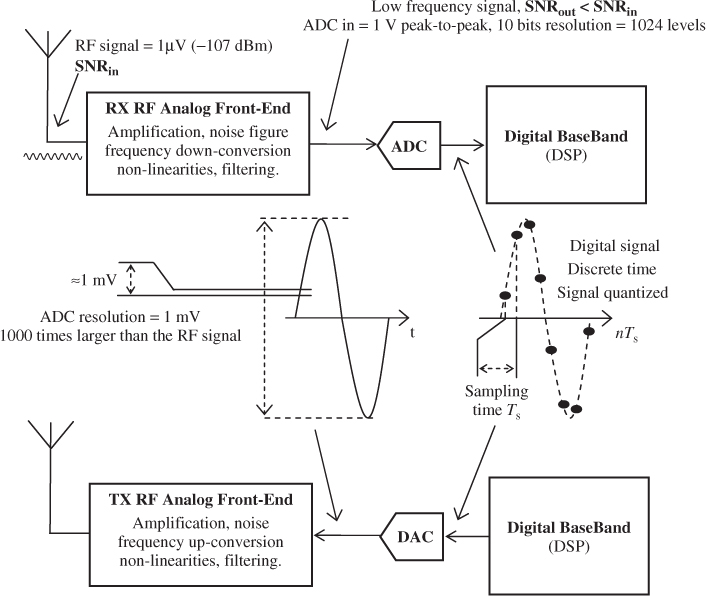1.2 RF AFE Overview
1.2.1 Introduction
In electronics engineering the term “analog signal” comes from the ANALOGY of the signal to continuously vary in time like the underlying physical phenomenon, as opposed to the digital/numerical signal which is discrete and quantized with a certain resolution imposed by the DSP. In modern transceivers the frontier between the analog domain and the digital one is delimited by analog to digital converters (ADCs) and digital to analog converters (DACs) in reception and transmission, respectively, as depicted in Figure 1.8. The RF AFE is composed of two paths, one for receiving the RF signal and the other one for transmitting the baseband signal.
Figure 1.8 RF analog and DBB partitioning in modern transceivers

The primary function of an RF analog receiver is to amplify and to frequency down-convert the desired signal from RFs to baseband with minimum degradation. Its main requirements are:
- The frequency band, imposed by the regulation bodies, specifying the local oscillator (LO) frequency range.
- The signal bandwidth specifying the analog baseband filtering.
- The minimum sensitivity specifying the noise figure imposed by the minimum signal-to-noise ratio (SNR) required for good data demodulation.
- The signal dynamic range specifying the automatic gain control (AGC) design and the ADC resolution.
- The adjacent channel selectivity (ACS) and the blockers/interferer ...
Get RF Analog Impairments Modeling for Communication Systems Simulation: Application to OFDM-based Transceivers now with the O’Reilly learning platform.
O’Reilly members experience books, live events, courses curated by job role, and more from O’Reilly and nearly 200 top publishers.

